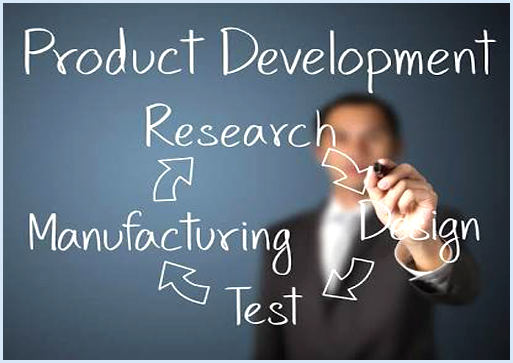Product Development
 Product development, also called new product management, is a series of steps that includes the conceptualization, design, development and marketing of newly created or newly rebranded goods or services. The objective of product development is to cultivate, maintain and increase a company's market share by satisfying a consumer demand. Not every product will appeal to every customer or client base, so defining the target market for a product is a critical component that must take place early in the product development process. Quantitative market research should be conducted at all phases of the design process, including before the product or service is conceived, while the product is being designed and after the product has been launched.
Product development, also called new product management, is a series of steps that includes the conceptualization, design, development and marketing of newly created or newly rebranded goods or services. The objective of product development is to cultivate, maintain and increase a company's market share by satisfying a consumer demand. Not every product will appeal to every customer or client base, so defining the target market for a product is a critical component that must take place early in the product development process. Quantitative market research should be conducted at all phases of the design process, including before the product or service is conceived, while the product is being designed and after the product has been launched.
Product development frameworks, Although product development is creative, the discipline requires a systematic approach to guide the processes that are required to get a new product to market. Organizations such as the Product Development and Management Association (PDMA) and the Product Development Institute (PDI) provide guidance about selecting the best development framework for a new product or service. A framework helps structure the actual product development
Identification of design criteria, involves brainstorming possible new products. Once an idea has been identified as a prospective product, a more formal product development strategy can be applied.
Idea generation, is the continuous and systematic quest for new product opportunities, including updating or changing an existing product.
Idea screening, takes the less attractive, infeasible and unwanted product ideas out of the running. Unsuitable ideas should be determined through objective consideration.
Concept development and testing is vital, The internal objective analysis of step two is replaced by customer opinion in this stage. The idea, or product concept at this point, must be tested on a true customer base. The testers' reactions can then be leveraged to adjust and further develop the concept according to the feedback.
Market strategy/business analysis is comprised of four points, which are product, price, promotion and placement.
Feasibility analysis/study yields information that is critical to the product's success. It entails organizing private groups that will test a beta version, or prototype, of the product, then evaluate the experience in a test panel. This feedback communicates the target market's level of interest and desired product features, as well as determines whether the product in development has the potential to be profitable, attainable and viable for the company, while satisfying a real demand from the target market.
Product technical design/Product development integrates the results of the feasibility analysis and feedback from beta tests from stage five into the product. This stage consists of turning that prototype or concept into a workable market offering; ironing out the technicalities of the product and alerting and organizing the departments involved with the product launch, such as research and development, finance, marketing, production or operations.
Test marketing, or market testing, differs from concept or beta testing in that the prototype product and whole proposed marketing plan, not individual segments, are evaluated. The goal of this stage is to validate the entire concept from marketing angle and message to packaging to advertising to distribution. By testing the entire package before launch, the company can vet the reception of the product before a full go-to-market investment is made.
Market entry/commercialization is the stage in which the product is introduced to the target market. All the data obtained throughout the previous seven stages of this approach are used to produce, market and distribute the final product to and through the appropriate channels. There is no hard and fast rule for the product development company to follow the same pattern. Some processes may be eliminated and some added as per the development plan.


